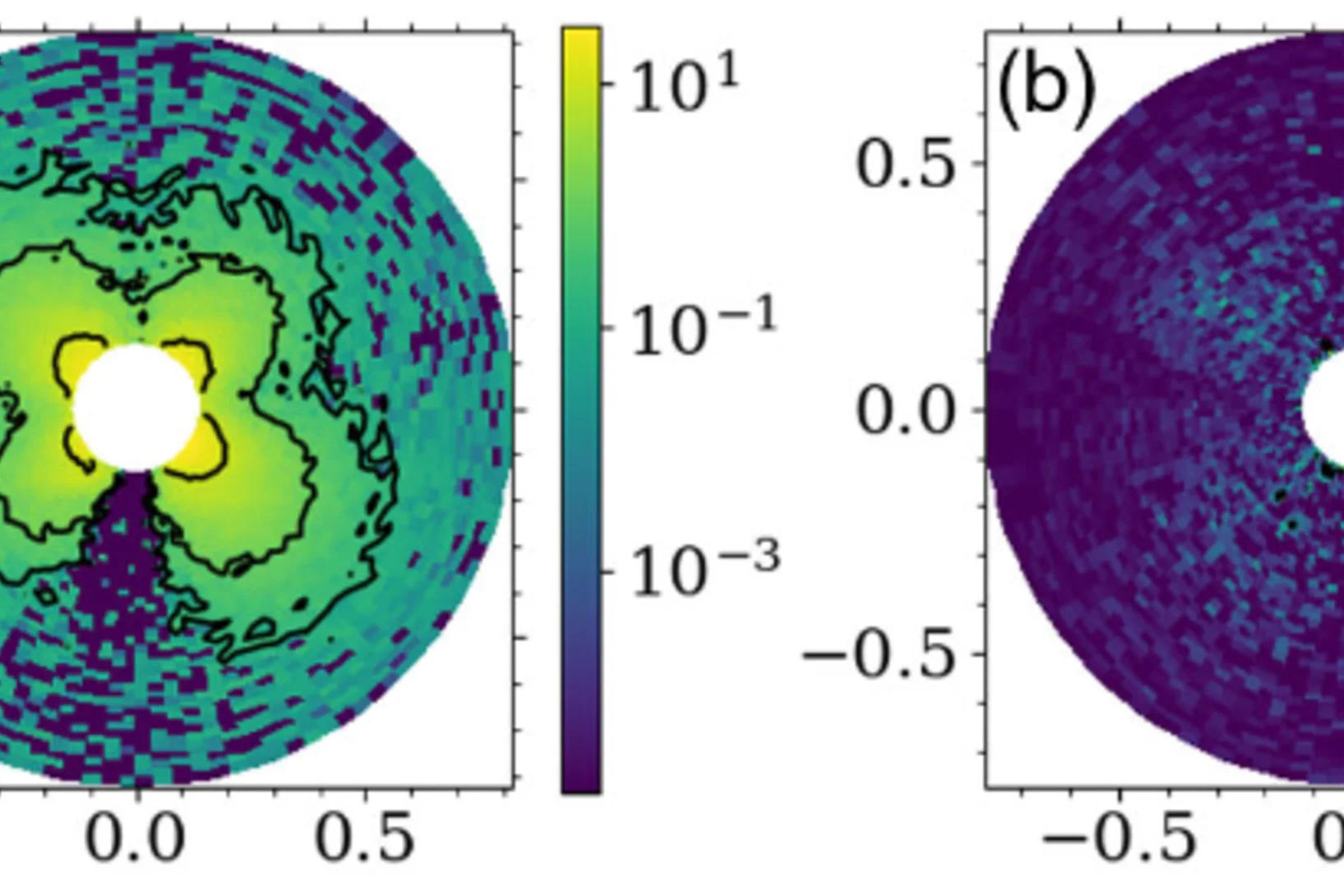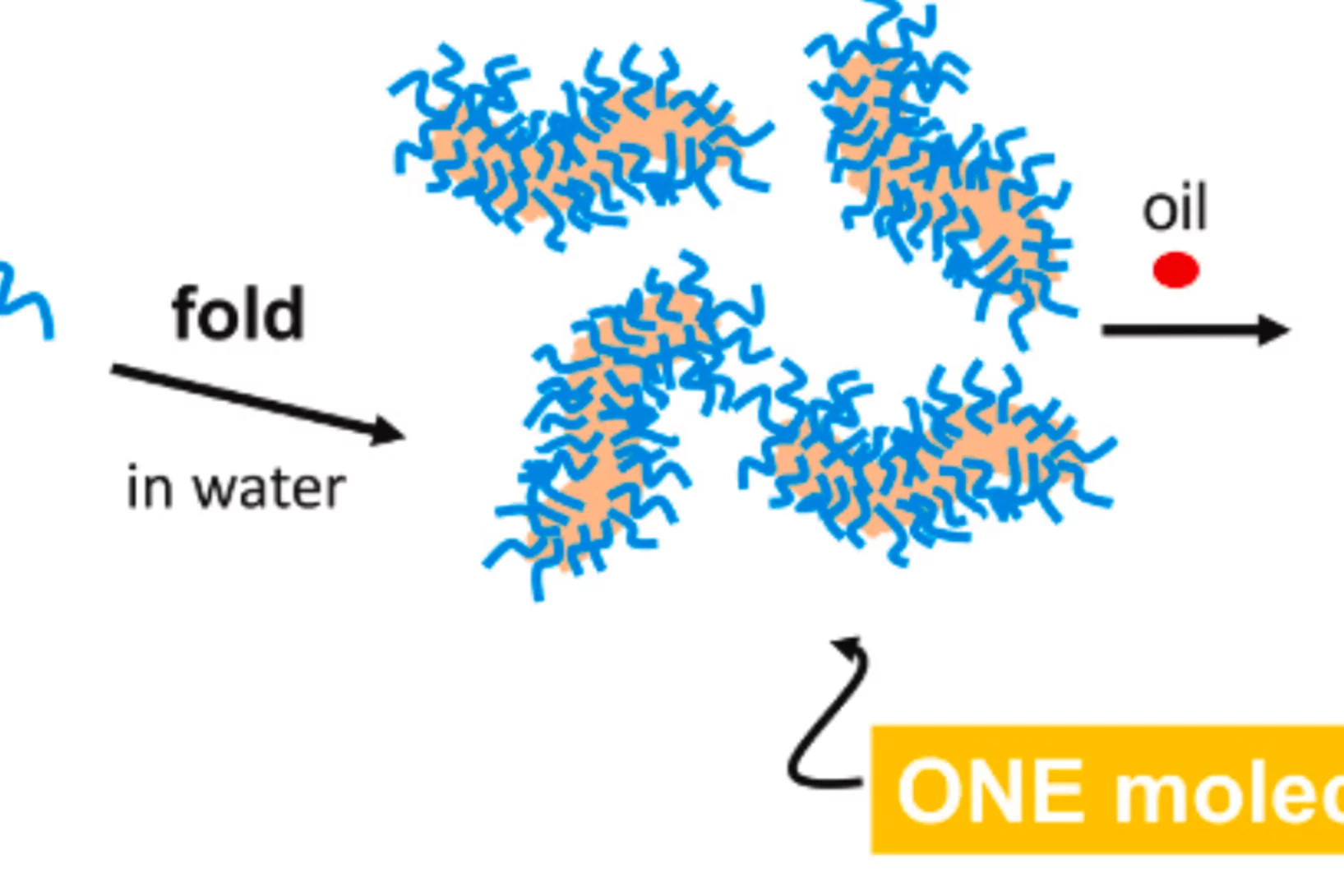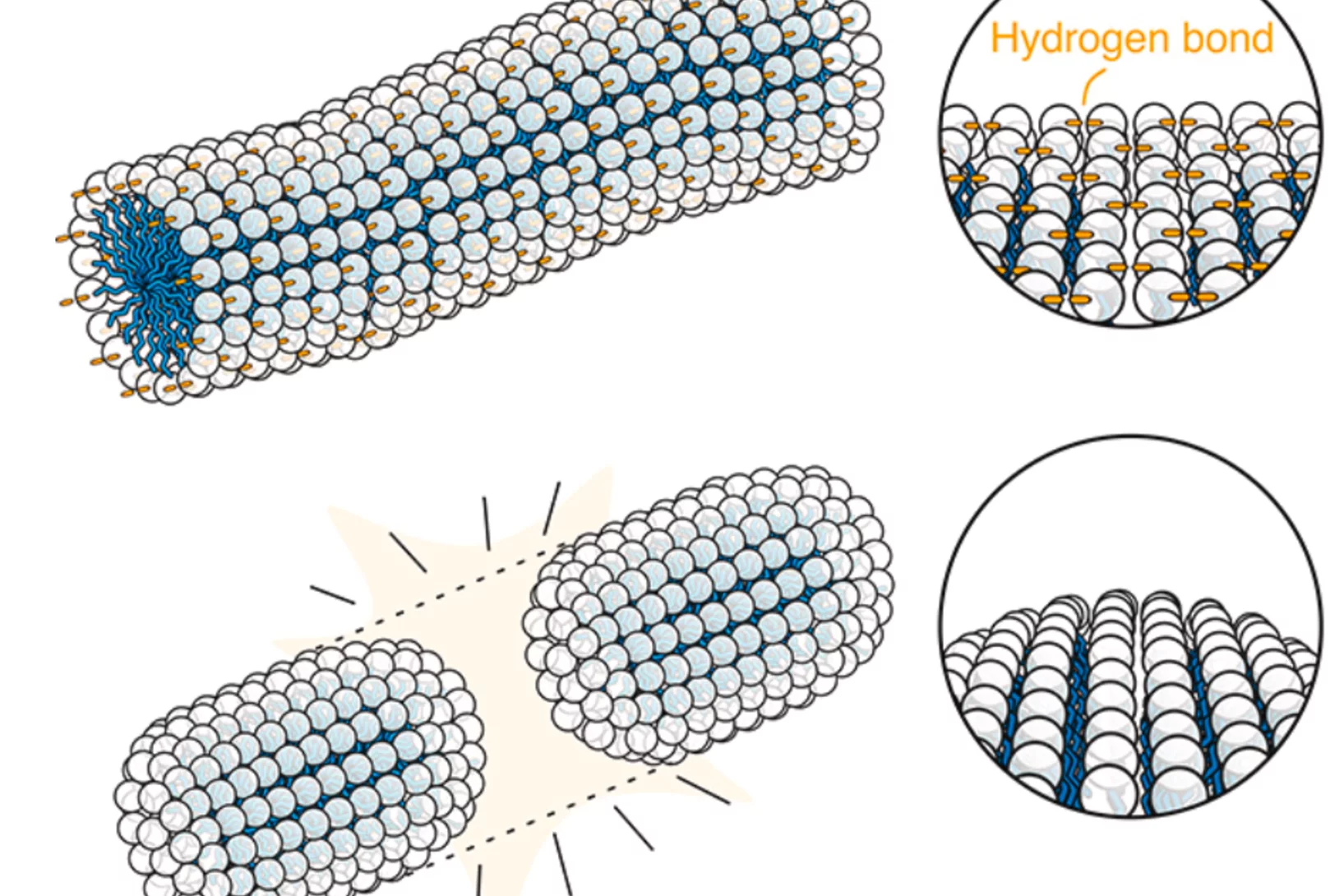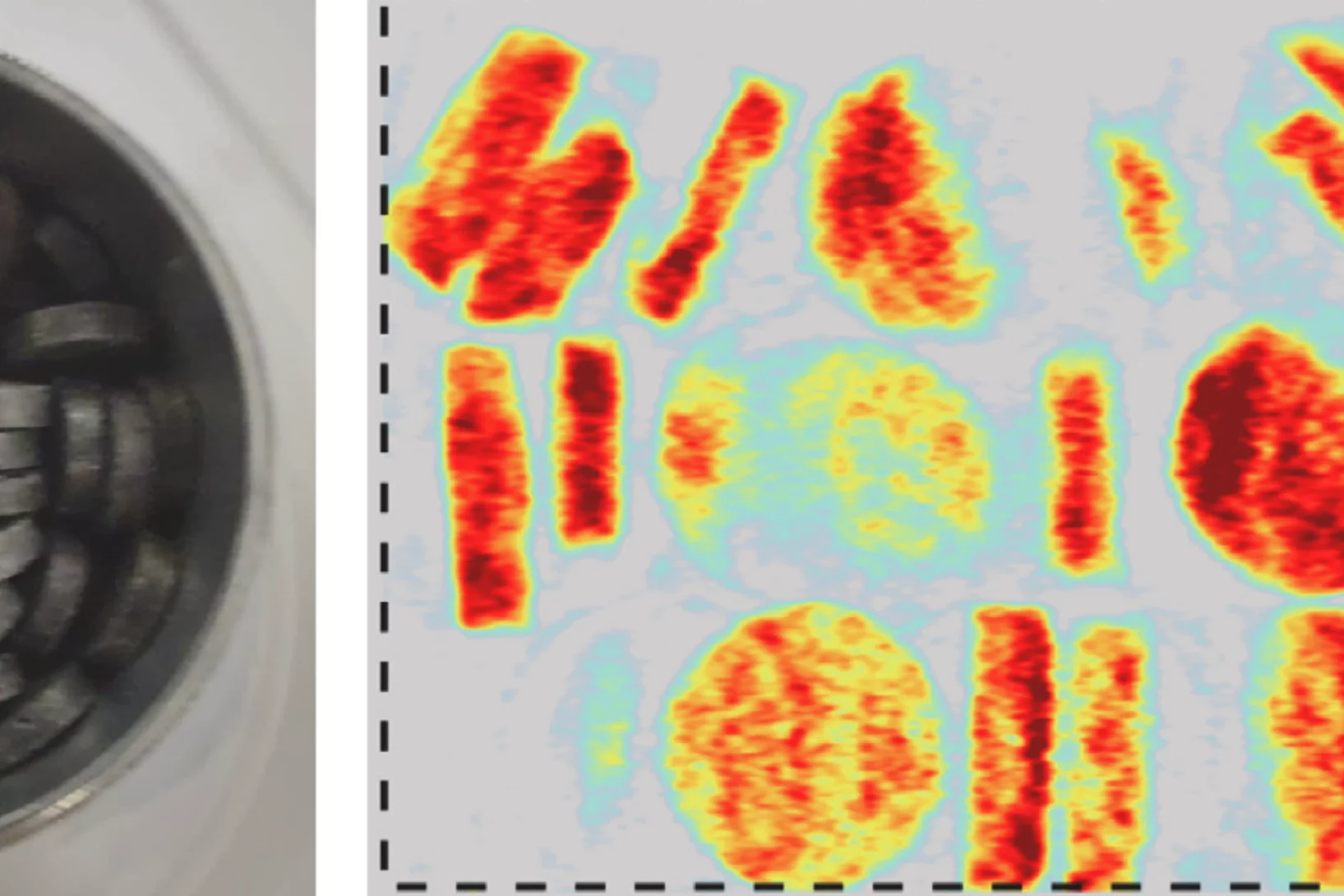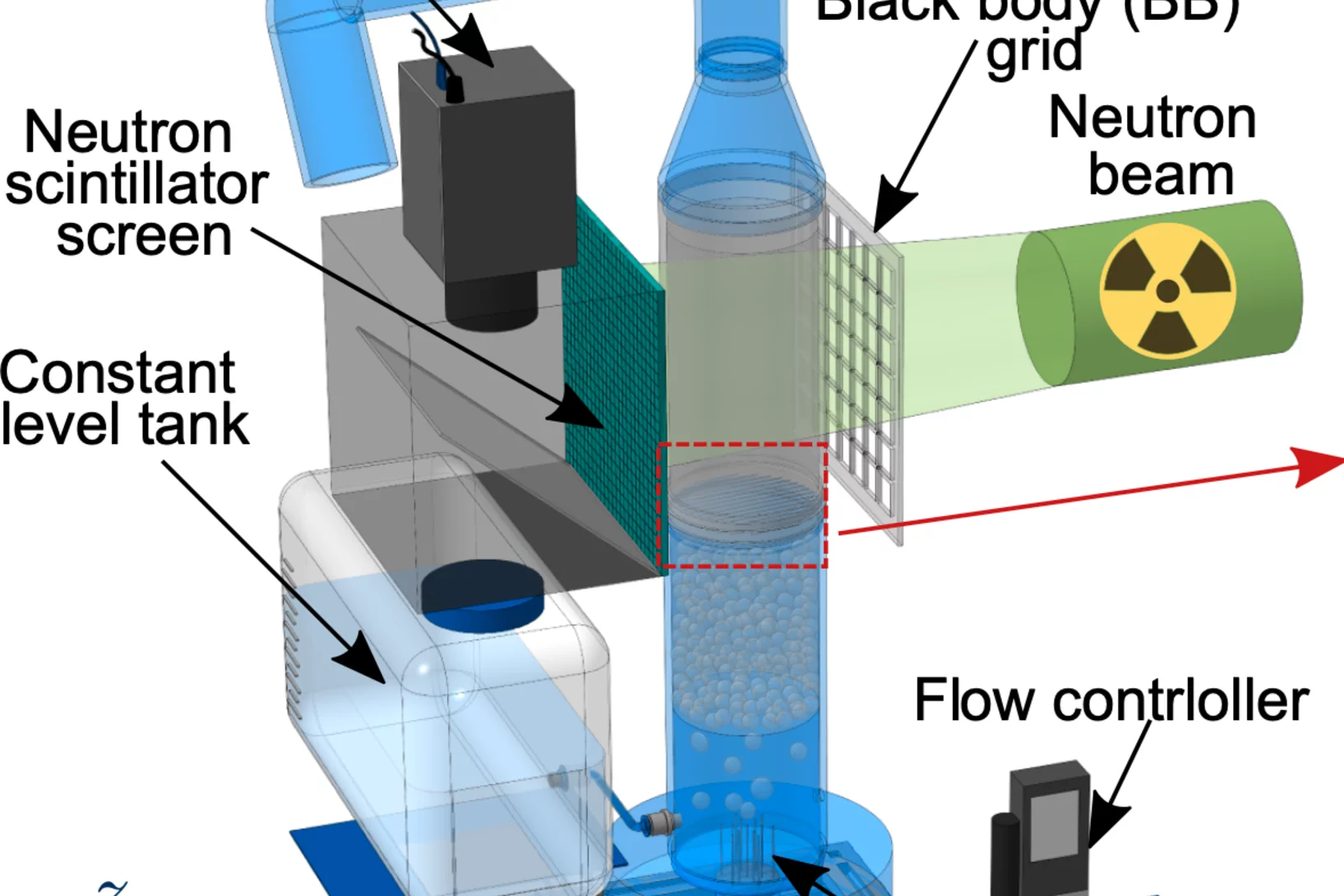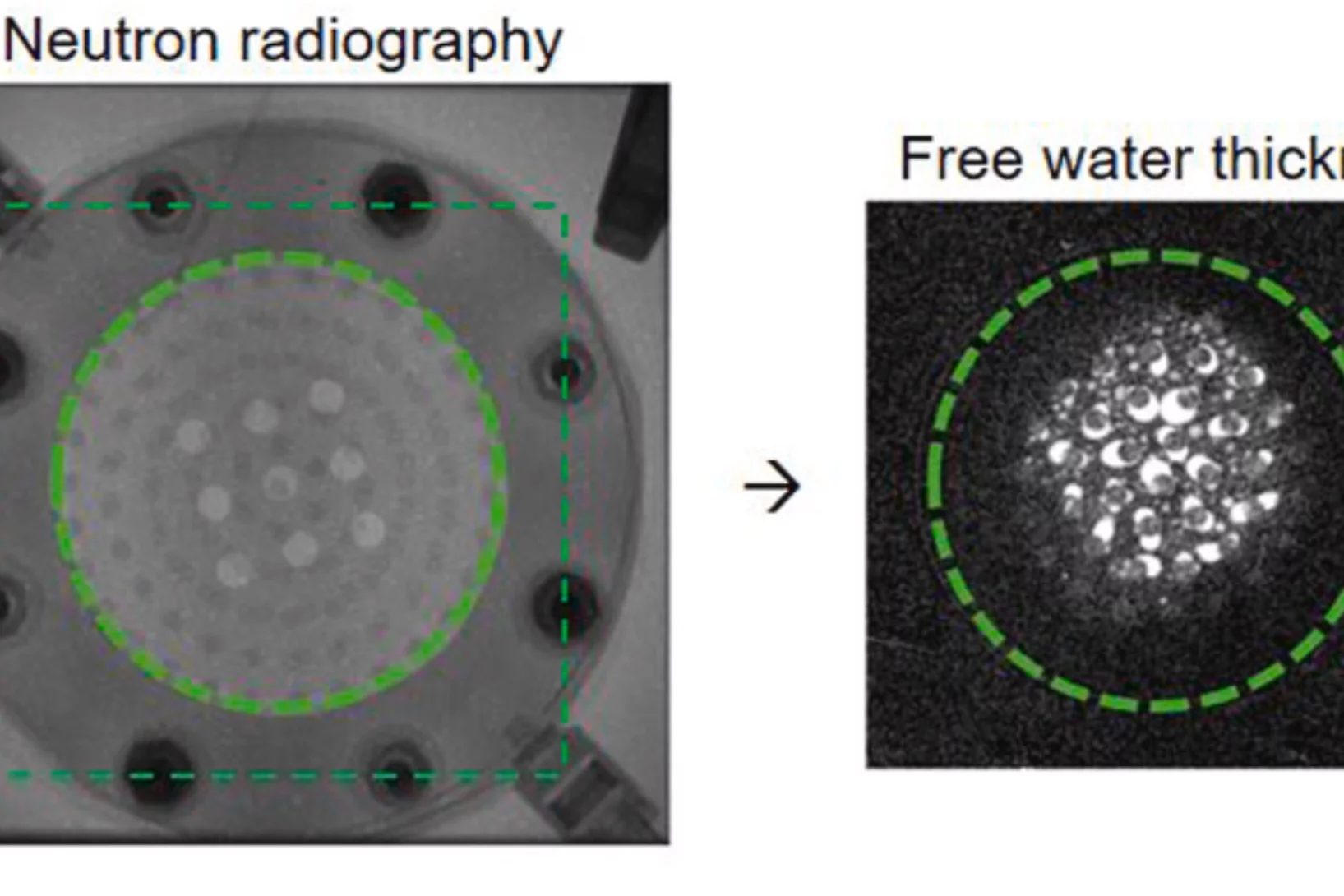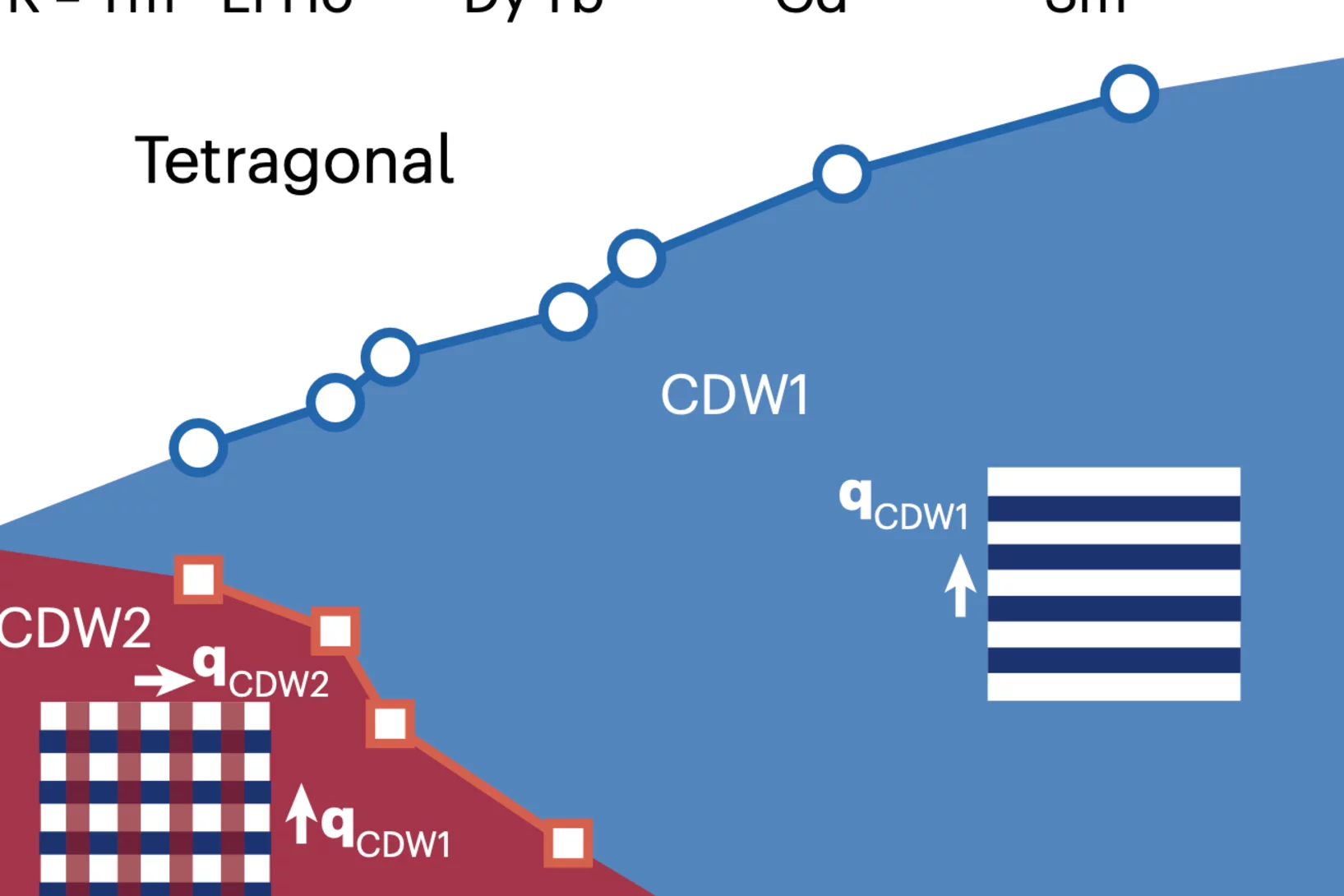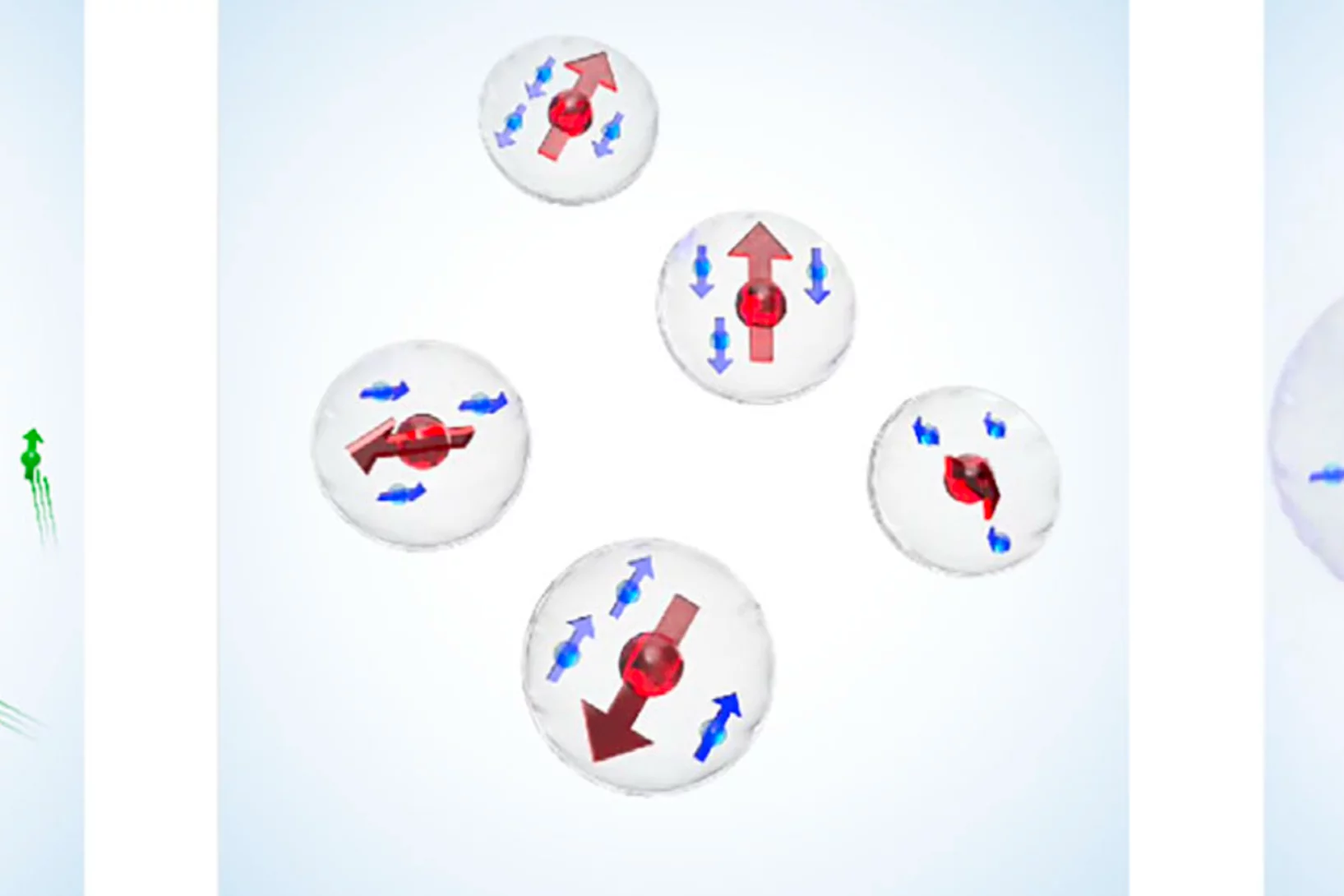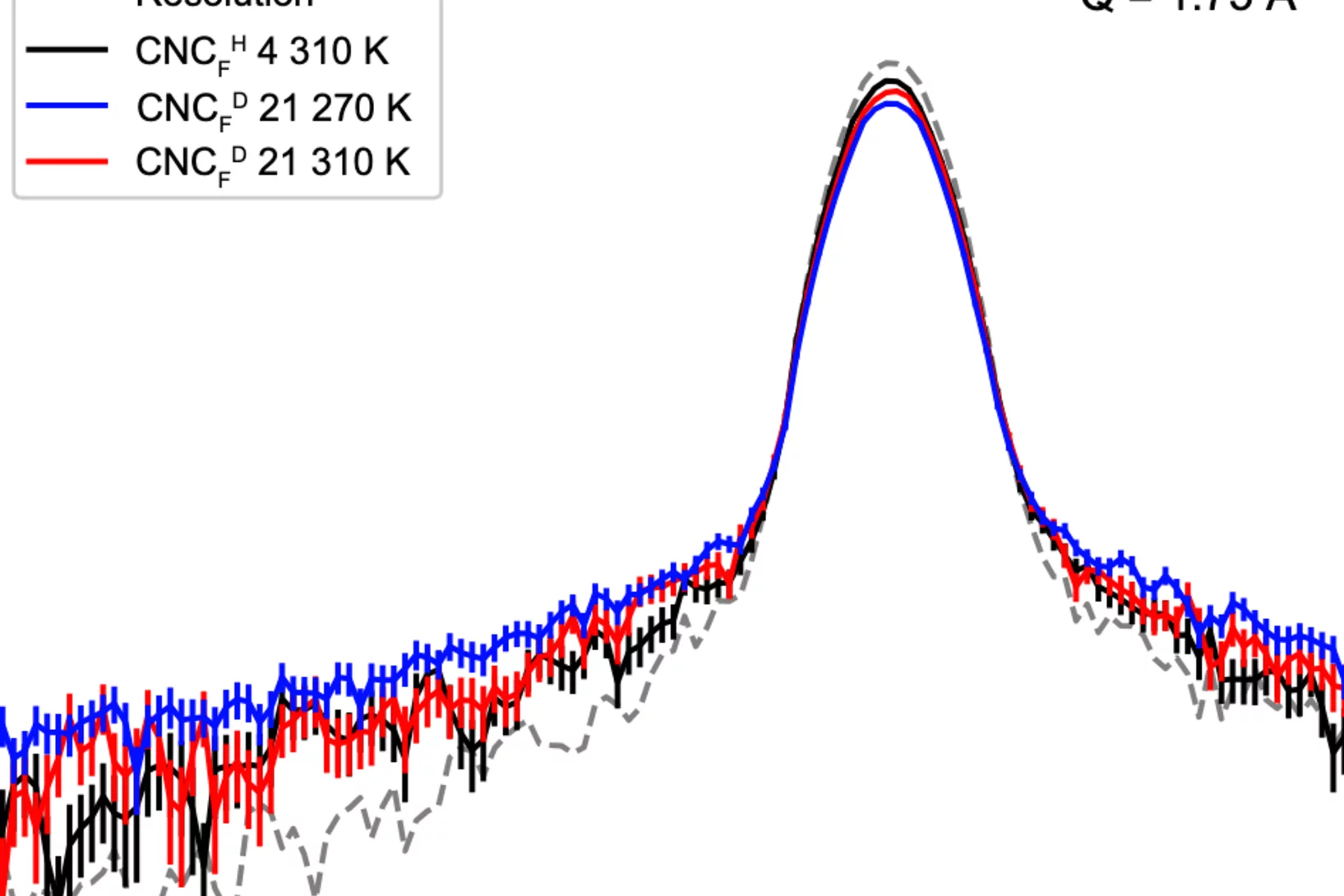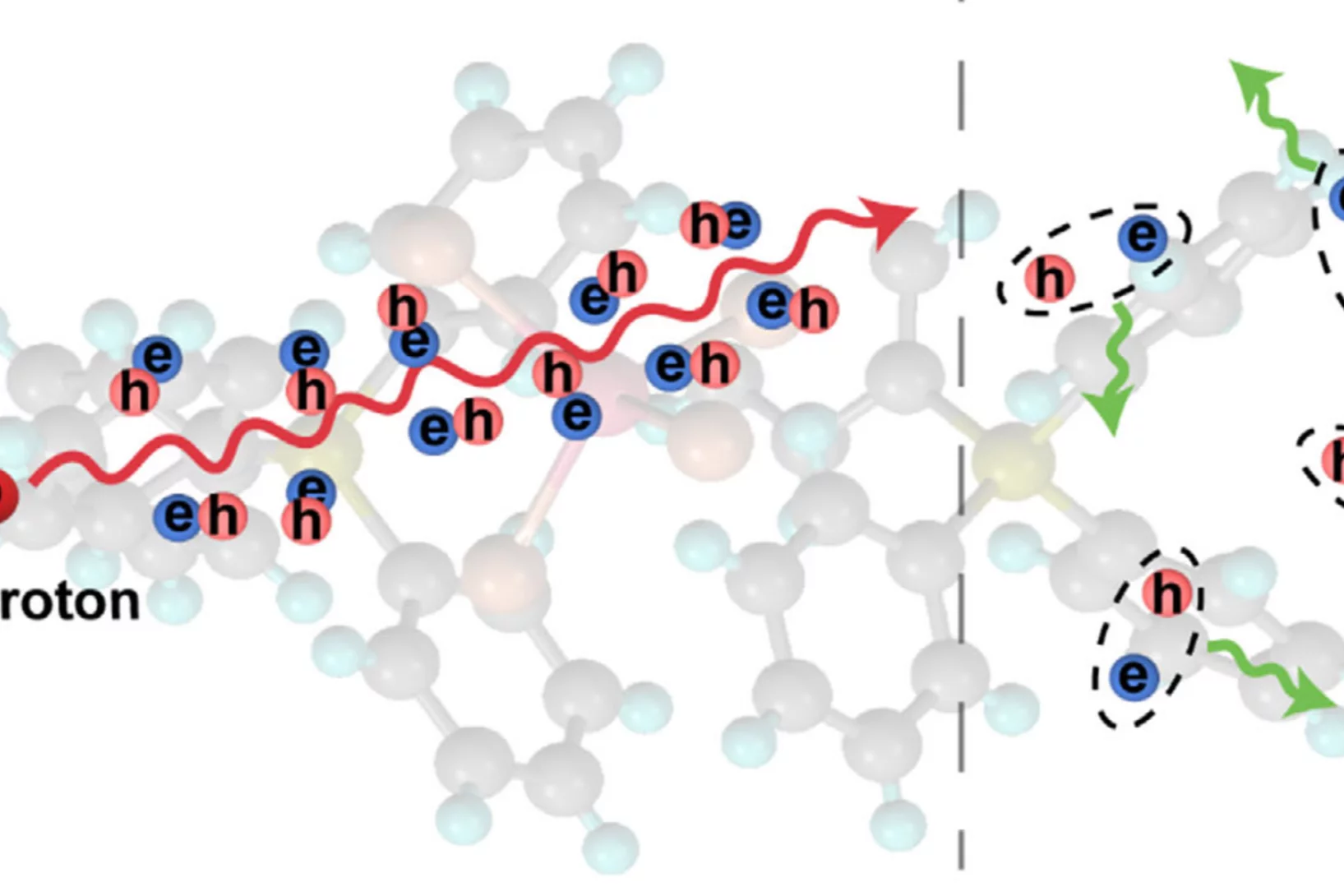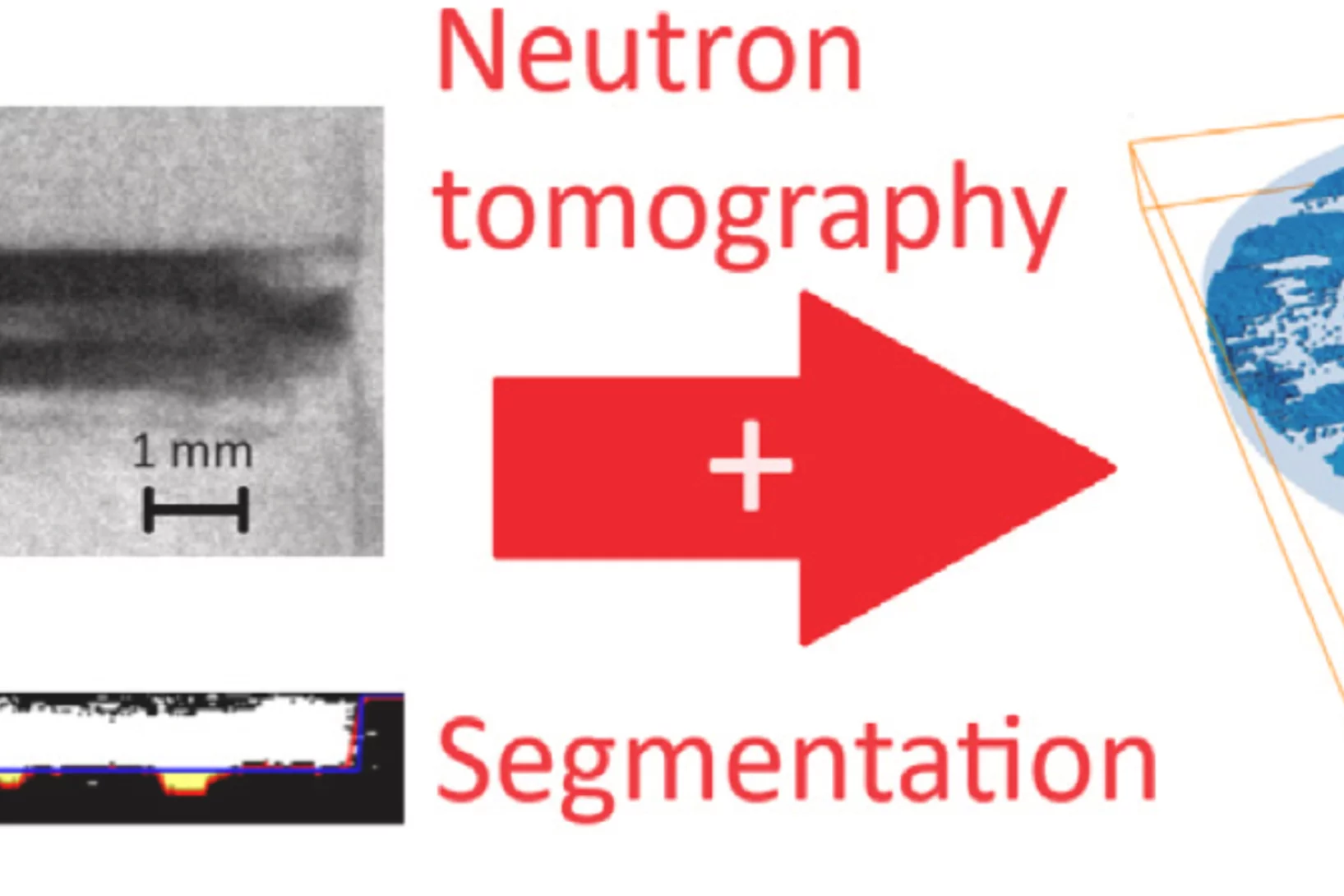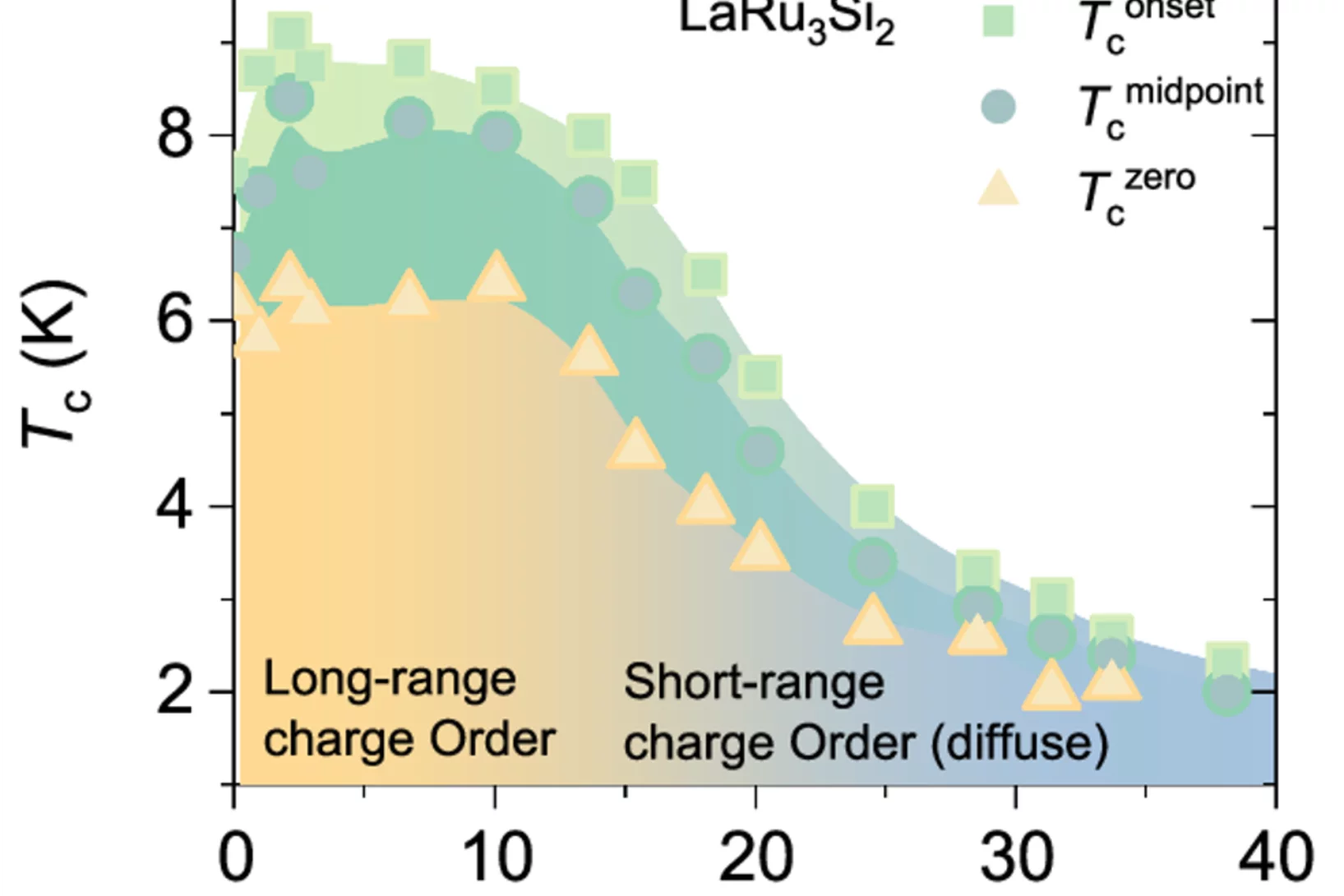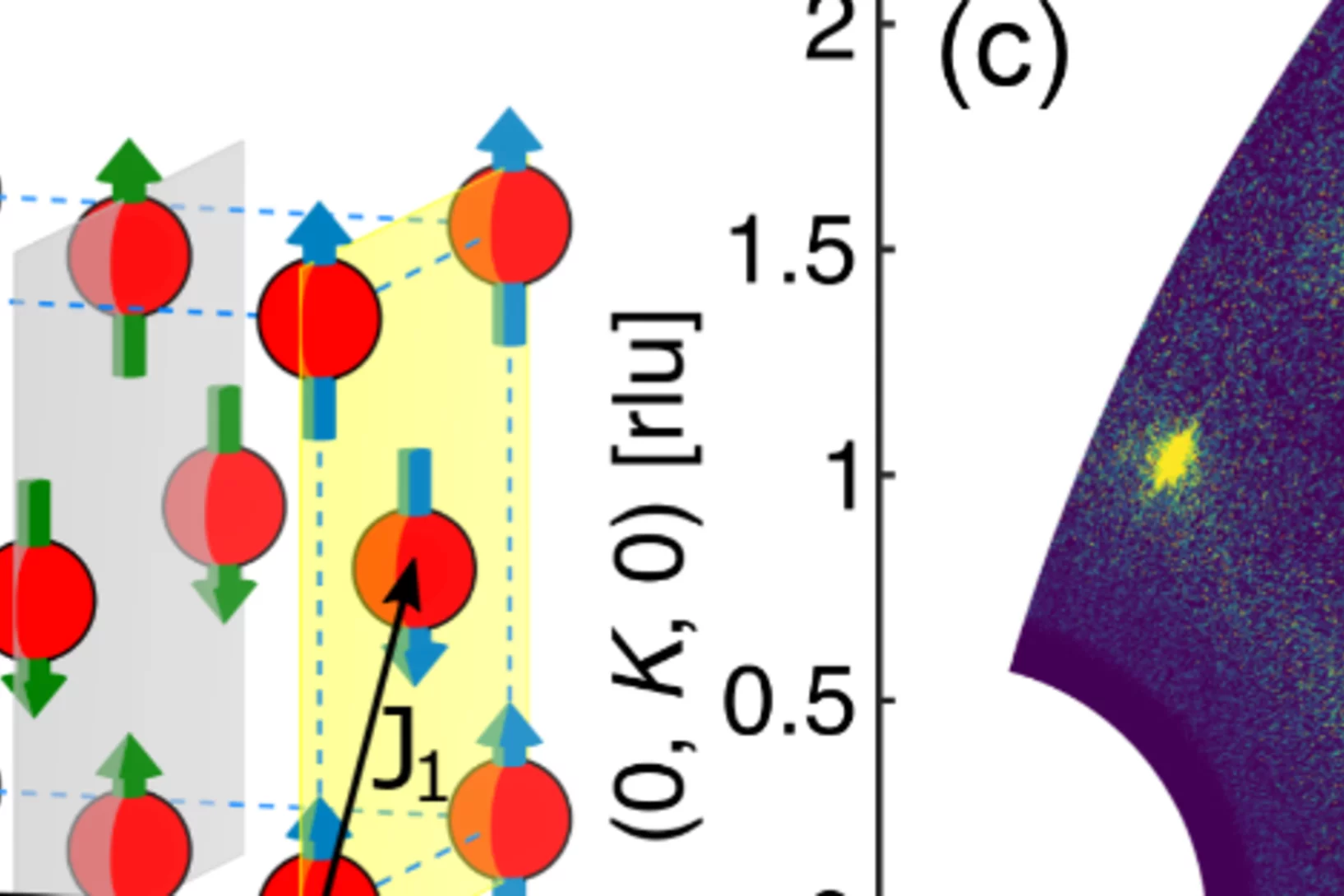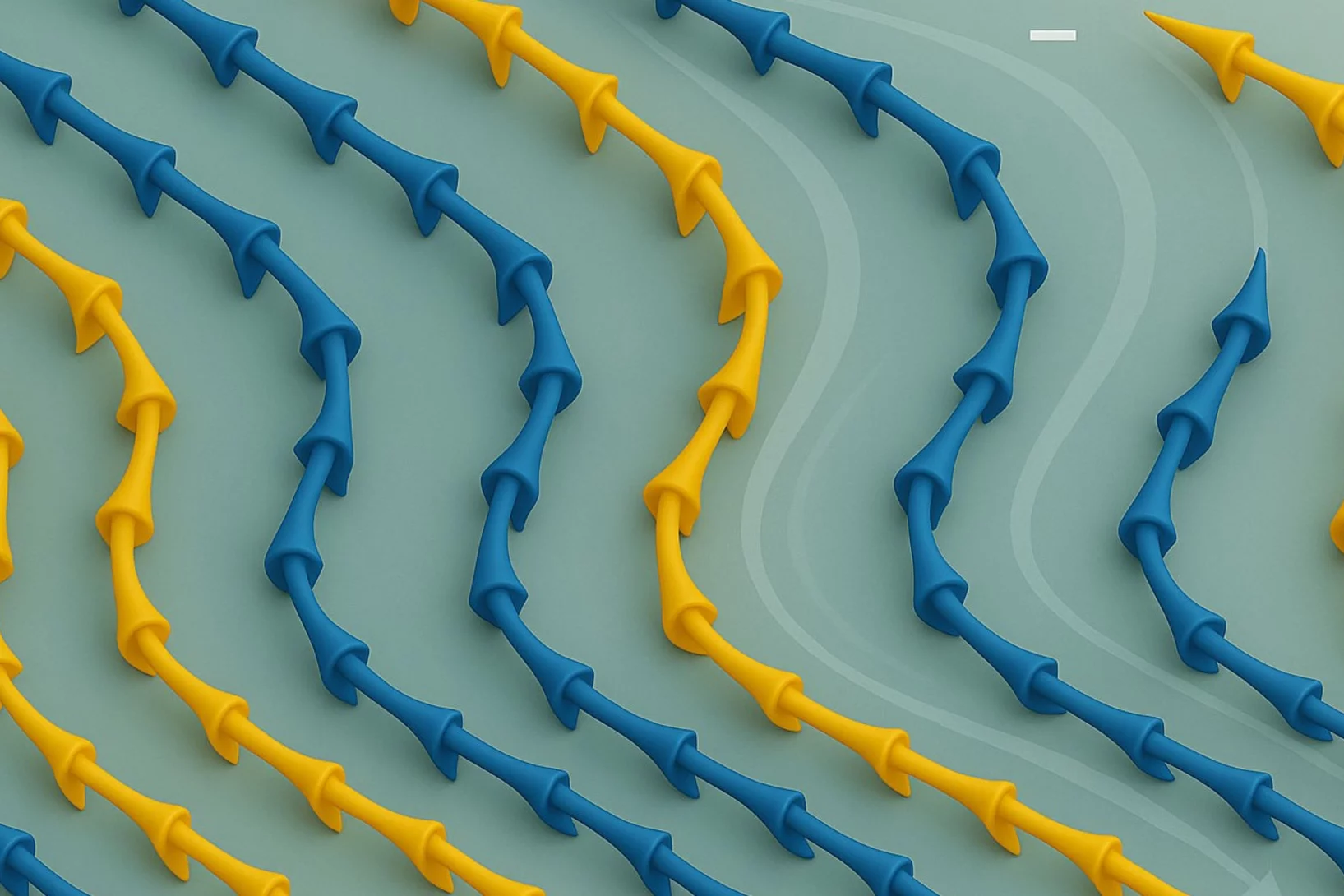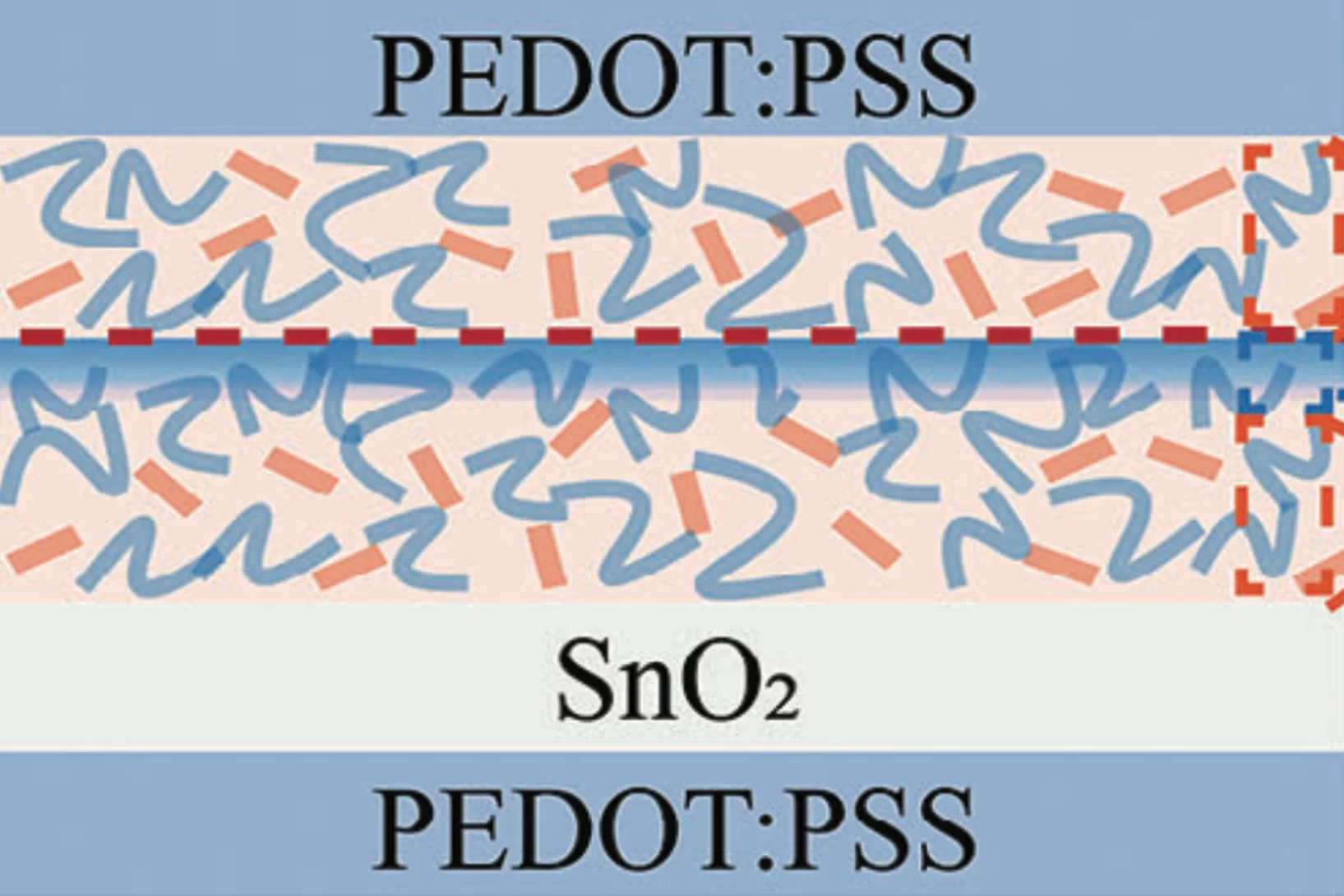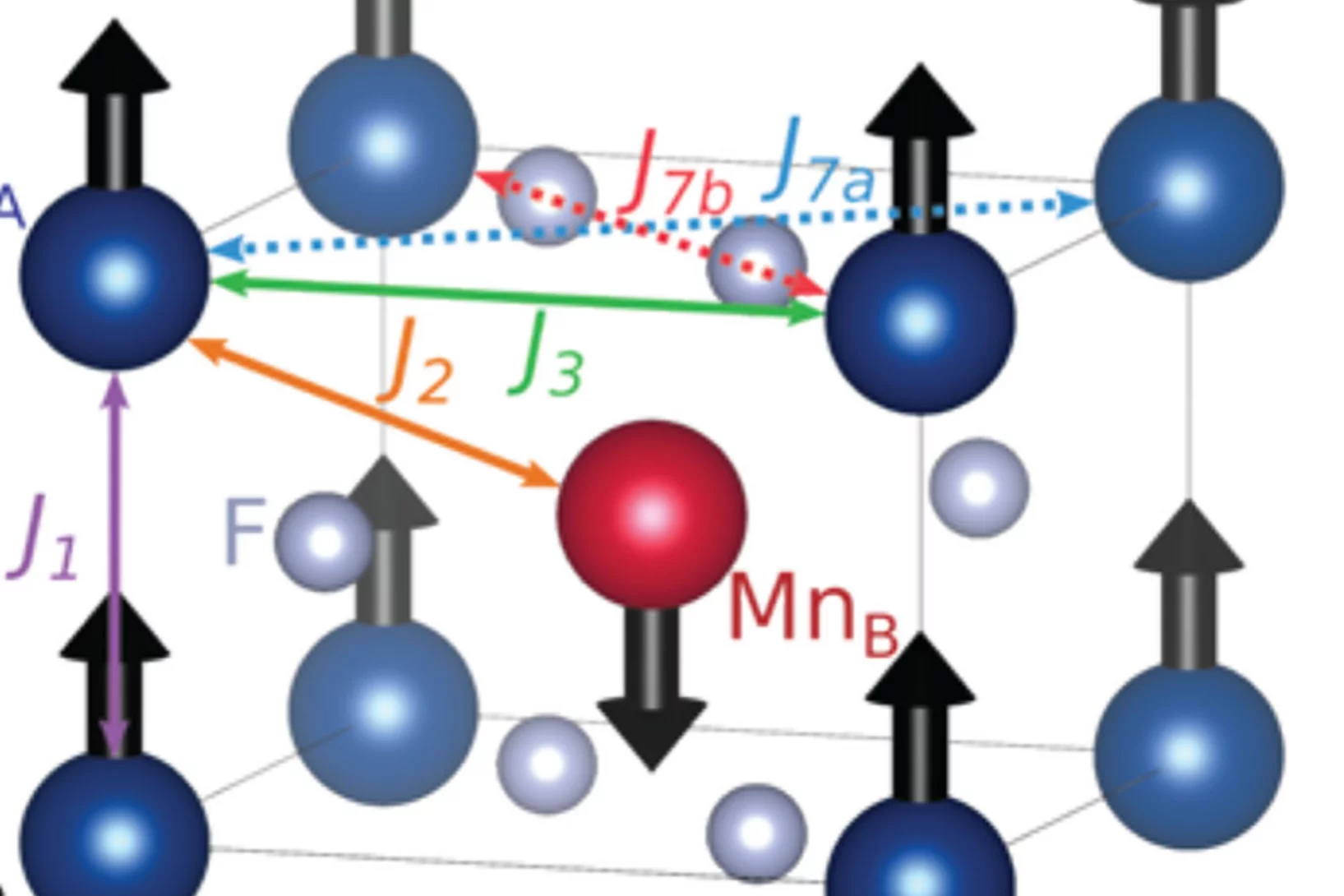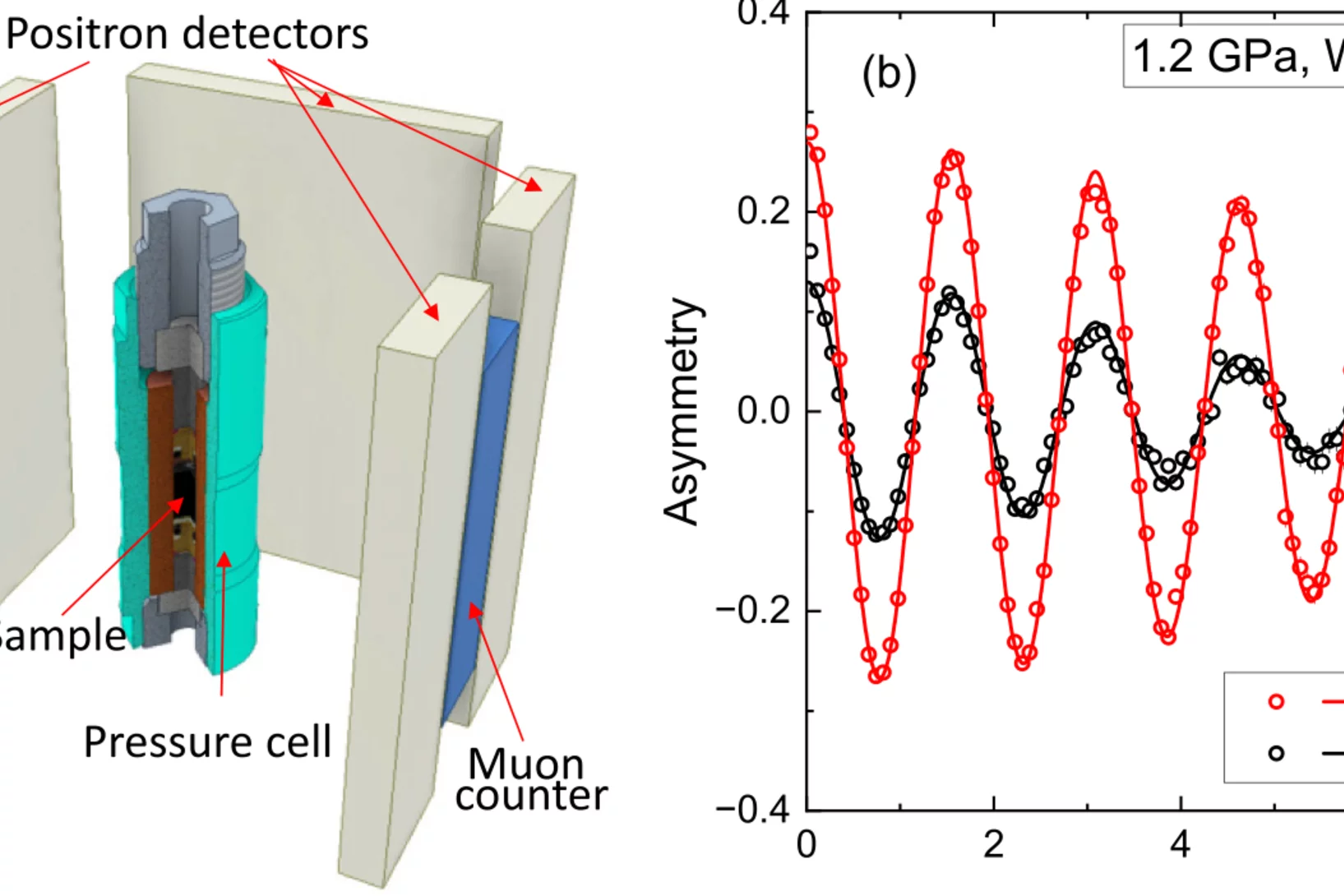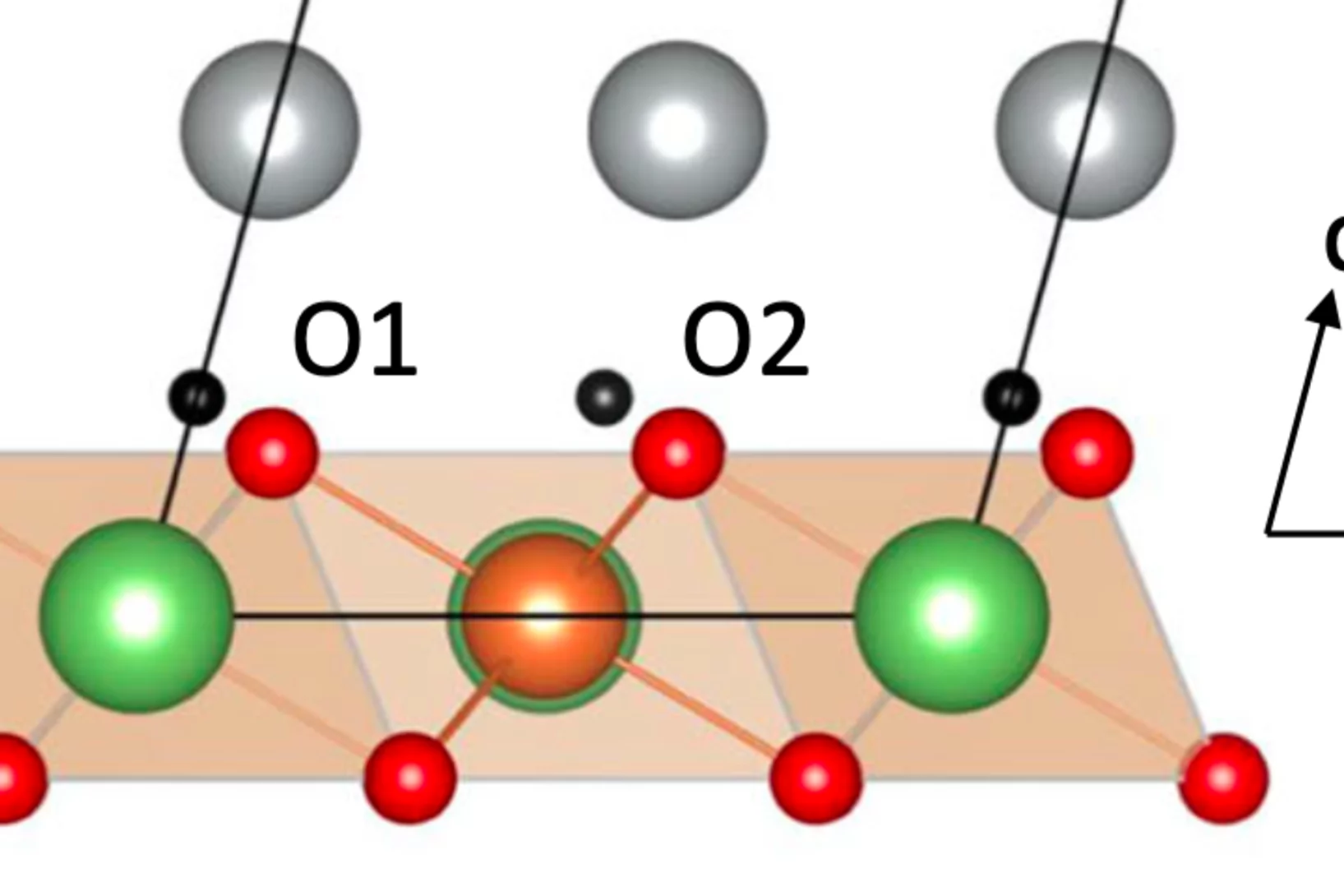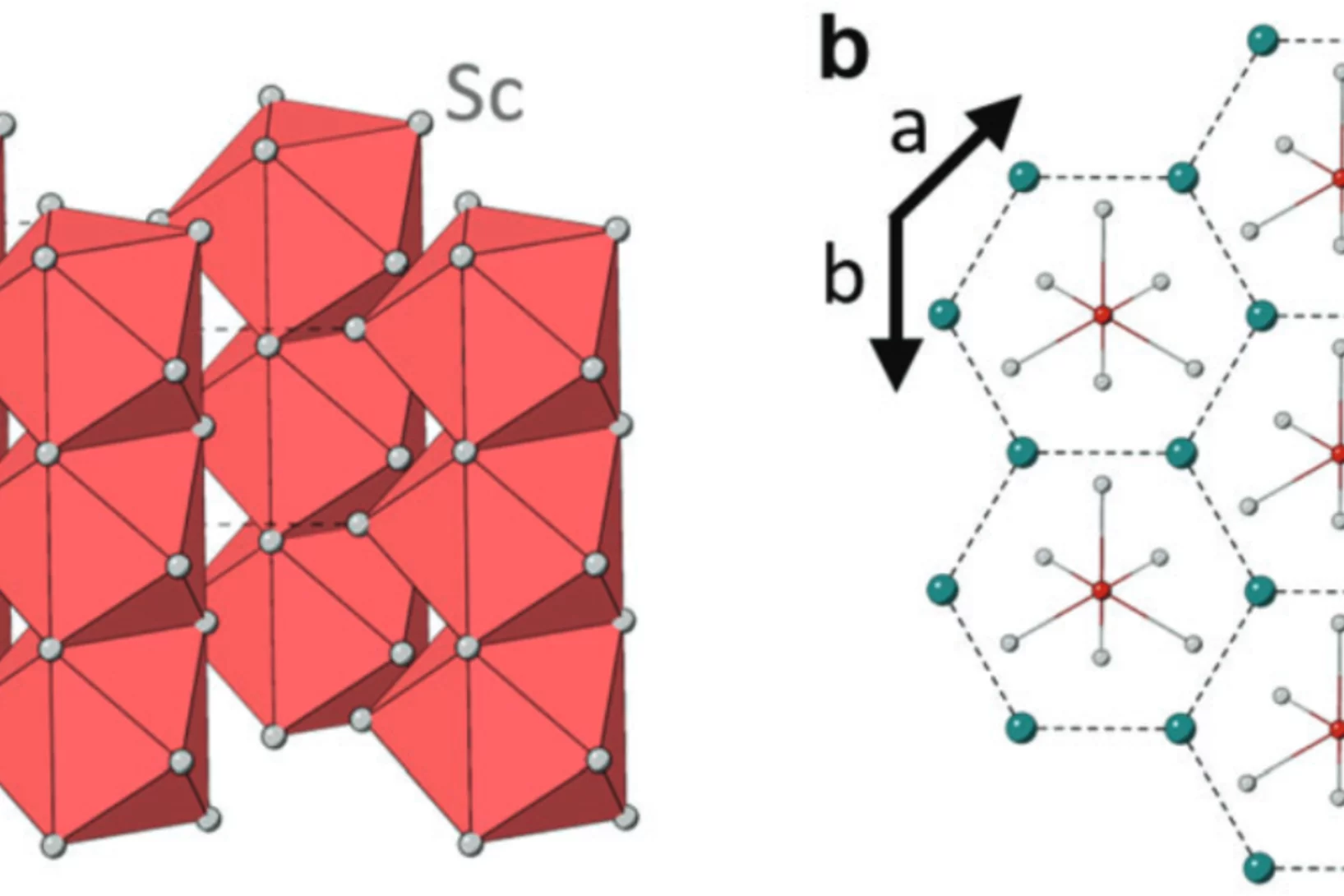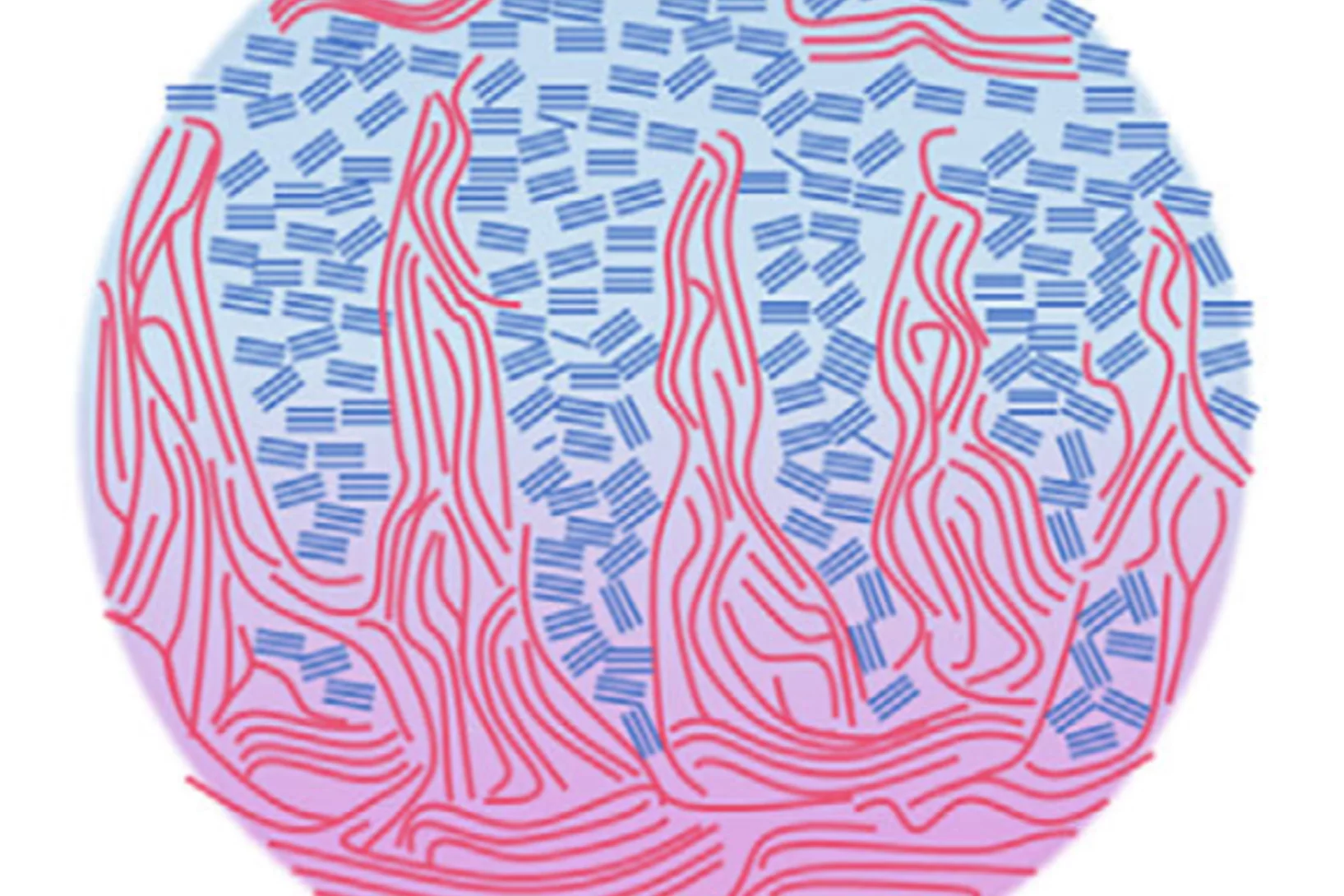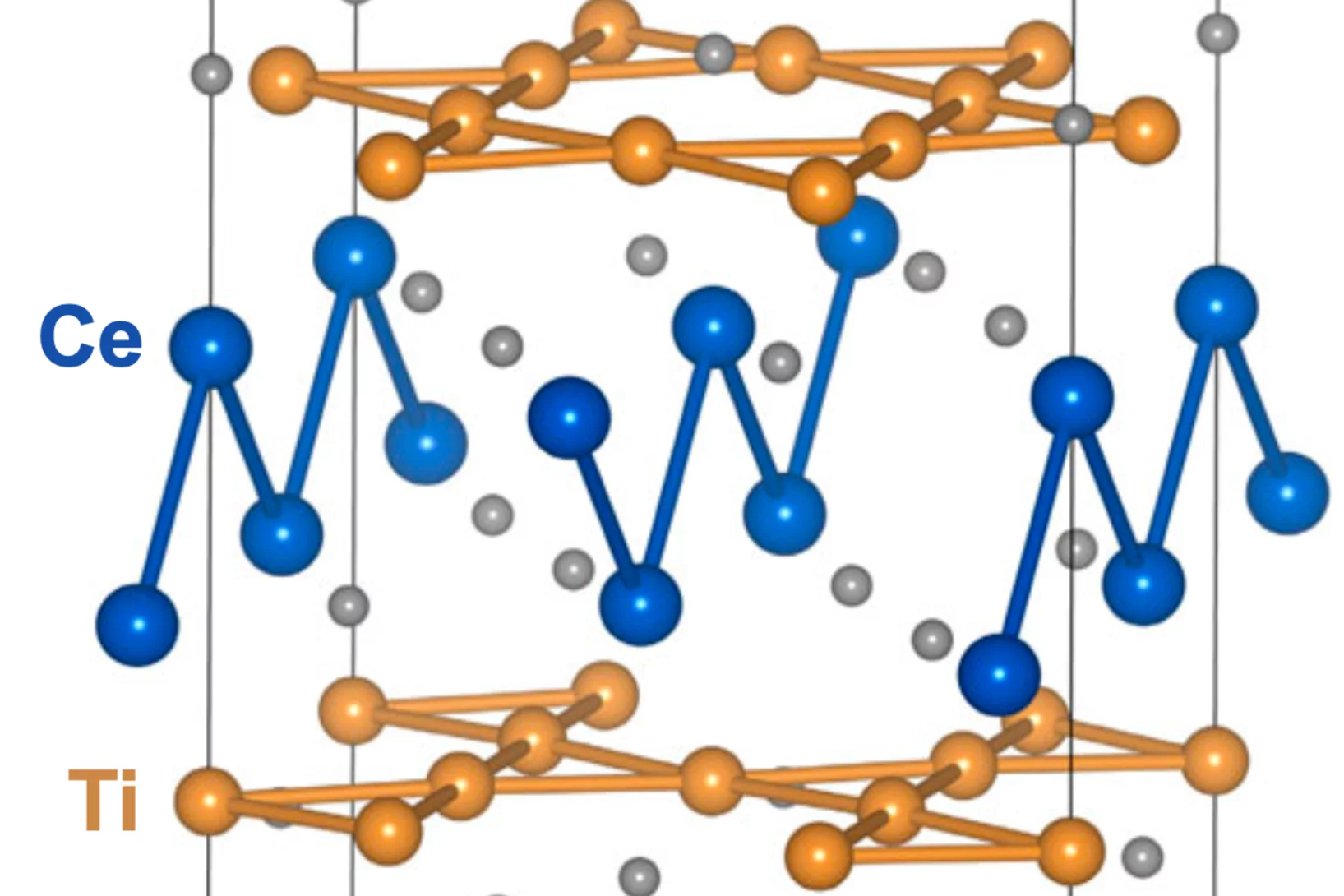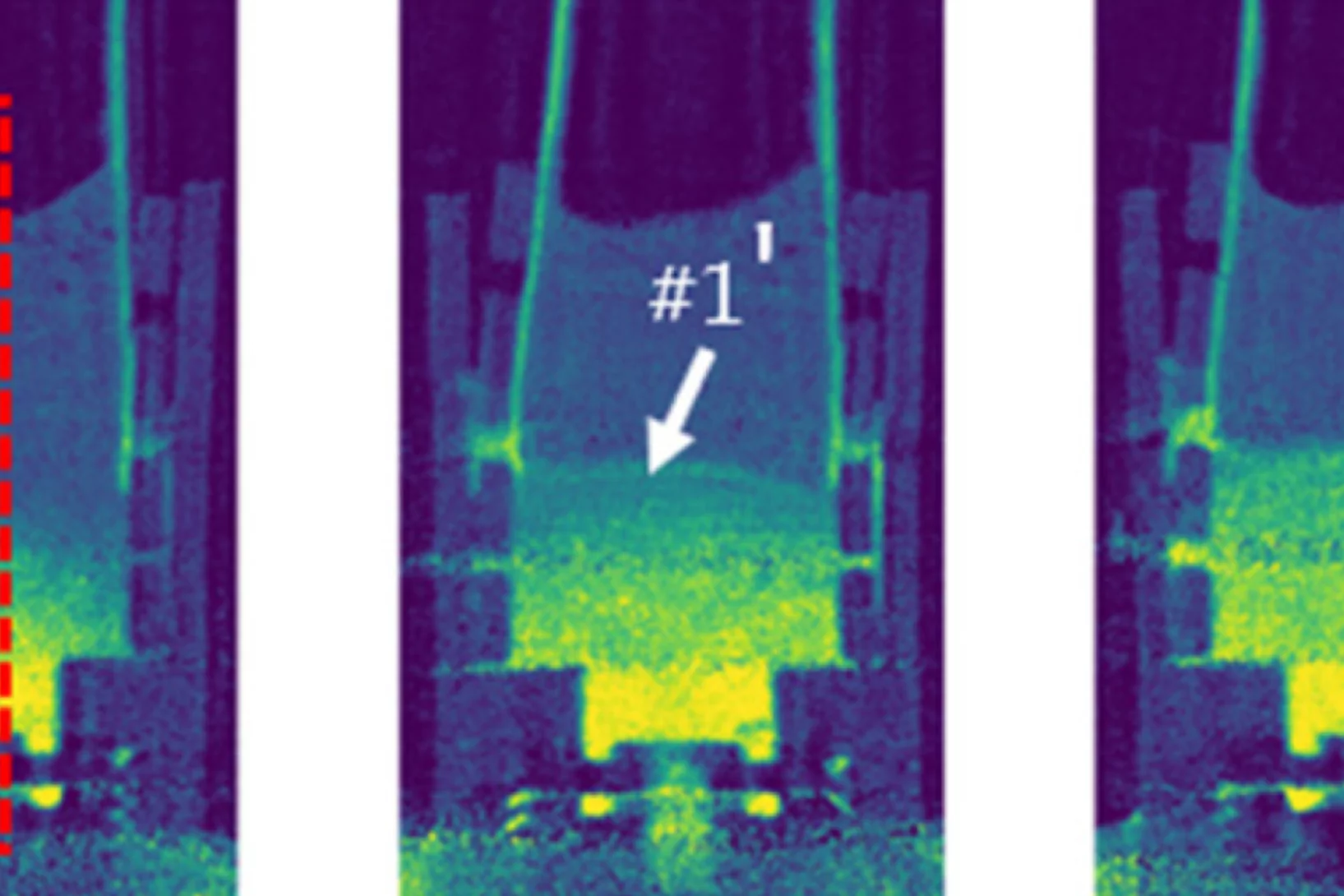Show filters
Anisotropic Band-Split Magnetism in Magnetostrictive CoFe2O4
Single crystal spinel CoFe₂O₄ exhibits the largest room-temperature saturation magnetostriction among non-rare-earth compounds and a high Curie temperature (T₍c₎ ∼ 780 K), properties that are critical to a wide range of industrial and medical applications. Neutron spectroscopy ...
Operando neutron imaging of an alkaline electrolysis cell for mapping gas distributions
Optimizing hydrogen and oxygen transport within porous electrodes is essential for improving the efficiency of industrial alkaline electrolyzers. In this study, we utilize operando dynamic neutron radiographic measurements to investigate ...
Spin-Disorder-Induced Angular Anisotropy in Polarized Magnetic Neutron Scattering
We experimentally report a hitherto unseen angular anisotropy in the polarized small-angle neutron scattering (SANS) cross section of a magnetically strongly inhomogeneous material ...
Single-chain polymer nanoparticles for oil solubilization
We report on the oil solubilization of amphiphilic single chain nanoparticles (SCNPs) based on random copolymers composed of oligo(ethyleneglycol) methacrylate (OEGMA) and anthracene methacrylate (AnMA). Small-angle X-ray scattering (SAXS) combined with molecular dynamics simulations reveal ...
Coexistence of Insulatorlike Paramagnon and Metallic Spin-Orbit Exciton Modes in SrIrO3
We probe the spectrum of elementary excitations in SrIrO3 by using heterostructured [(SrIrO3)m / (SrTiO3)l] samples to approach the bulk limit. Our resonant inelastic x-ray scattering (RIXS) measurements at the Ir L3 edge reveal ...
Hydrogen bonding exacerbates viscoelasticity of amino acid– and betaine surfactant self-assemblies
Many day-to-day materials rely on formulations of surfactants to control flow, texture and application. Inspired by the pairing of bases between DNA strands, we demonstrate enhanced control ...
Depth-resolved magnetic order in superconducting topological insulator/FeTe thin film heterostructures
The search for chiral topological superconductivity in magnetic topological insulator (TI)-FeTe heterostructures is a key frontier in condensed matter physics, with potential applications in topological quantum computing. The combination of ferromagnetism, superconductivity, and topologically nontrivial surface states brings together the key elements required for chiral Majorana physics. In this work ...
In-situ neutron tomography study of a dehydrating and hydrating packed bed for thermochemical heat storage
To study the heat and water vapor transport and reaction kinetics in a packed bed of thermo-chemical material on both reactor and tablet level, an in-situ neutron imaging study of a dehydrating and subsequently hydrating packed bed consisting of cylindrical K2 CO3 tablets was performed at the Paul Scherrer Institute ...
Field-Induced Magnon Decay, Magnon Shadows, and Rotonlike Excitations in the Honeycomb Antiferromagnet YbBr3
The search for new quantum many-body phenomena in magnetic materials has a strong focus on highly frustrated systems and the resulting quantum spin-liquid state. However, even unfrustrated magnetic materials show a multitude of unconventional features in their spin excitation spectra. By using the synergy of ...
Generating structured foam via flowing through a wire array
Efficient manufacturing methods could unlock foams with tailored, anisotropic properties. Conventional foam production methods rely on the self-arrangement of bubbles, typically leading to isotropic materials, or involve intricate additive layering processes. This study presents a simple, passive technique to modify the foam structure. A set of thin parallel wires ...
Neutron radiography analysis of water management in a passive proton-exchange membrane fuel cell with superhydrophobic catalyst layers
Water transport in proton-exchange membrane fuel cells (PEMFCs) with superhydrophobic catalyst layers (CLs) has been studied with neutron radiography. Superhydrophobic CLs were deposited by electrospray on the membrane to be tested on the cathode and anode sides of the cells. The cells are operated under ...
Discovery of Nodal-Line Superconductivity in Chiral Crystals
Chiral crystals, whose key feature is the structural handedness, host exotic quantum phenomena driven by the interplay of band topology, spin-orbit coupling (SOC), and electronic correlations. Due to the limited availability of suitable chiral-crystal materials, their unconventional superconductivity (SC) remains largely unexplored.
Here, the discovery ...
Ferroaxial density wave from intertwined charge and orbital order in rare-earth tritellurides
The discovery of the axial amplitude mode—commonly referred to as the Higgs mode—in charge density wave systems, such as rare-earth tritellurides, indicates the presence of a hidden order. A theoretical study proposed that this axial Higgs mode arises from a hidden orbital texture of the charge density wave, which produces a ferroaxial charge order.
However, experimental evidence ...
Observation of Magnetic Pseudogap Behavior in Phosphorus-Doped Silicon
The recent discovery of a Kondo condensate in phosphorus-doped silicon (Si:P) presents its significant potential for achieving novel many-body quantum states. Si:P exhibits Kondo condensation, characterized by an energy gap in the electronic density of states, while the precise nature of its magnetic state has yet to be determined.
Here, we utilize ...
Hydration- and Temperature-Dependent Rotational Dynamics and Water Diffusion in Nanocellulose
Nanocellulose is a promising alternative to fossil-derived materials, but its development is hindered by a limited understanding of cellulose–water interactions. Herein, quasielastic neutron scattering (QENS) is used to investigate how hydration and temperature affect the localized rotations in cellulose nanocrystals (CNC) and the diffusion of mobile water. QENS reveals ...
Bright Monocompound Metal Halide Scintillator for Fast Neutron Radiography
Fast neutron imaging is a promising technique for visualizing objects containing dense, mixed light-and-heavy-elements materials, such as combustion engines, nuclear fuel assemblies, and fossils, where X-rays and thermal neutrons are ineffectiv. However, the limited efficiency of current detection technologies hinders their widespread adoption. Recoil proton detection ...
Neutron imaging in 2D and 3D as a powerful tool to investigate electrolyte degradation and plating mechanisms in sodium-ion batteries
To develop durable and high-performance sodium-ion batteries, it is crucial to understand the degradation processes taking place during electrochemical cycling. This study presents the first demonstration of visualizing the effects of electrolyte degradation in sodium-ion batteries, via 2D and 3D neutron imaging thereby visualizing the degradation of the cells. The experiment ...
A New Quantum Landscape: Coexisting High-Tc Superconductivity, Magnetism, and Complex Charge Order in LaRu3Si2.
Despite intense research on kagome superconductors, many fundamental questions remain—especially regarding the unconventional nature of their charge order and superconducting phases. These materials are rich in complexity, and to truly unravel their behavior, a broad and integrated approach is essential. In our study ...
Microscopic Origin of Reduced Magnetic Order in a Frustrated Metal
Although magnetic frustration in metals provides a promising avenue for novel quantum phenomena, their microscopic interpretation is often challenging. Here, we use the face-centered cubic intermetallic HoInCu4 as model material to show that Hamiltonians neglecting the charge degree of freedom are appropriate for frustrated metals possessing low density of states at the Fermi surface ...
Steering magnetic textures with electric fields
Neutrons reveal a new way to control magnetism at the nanoscale
Understanding and Addressing the Performance Asymmetry Issue in Semitransparent Laminated Organic Photovoltaic Devices
Organic photovoltaics (OPVs) offer a promising solution for indoor energy harvesting. However, fundamental investigations to understand and optimize industrial processes such as roll-to-roll lamination for upscaling remain limited. This study investigates a critical failure mode in the upscaling of OPVs.
One major challenge ...
Absence of Altermagnetic Magnon Band Splitting in MnF2
Altermagnets are collinear compensated magnets in which the magnetic sublattices are related by rotation rather than translation or inversion. One of the quintessential properties of altermagnets is the presence of split chiral magnon modes. Recently, such modes have been predicted in MnF2.
Here, we report inelastic neutron scattering results ...
Pressure effect on the spin density wave transition in La2PrNi2O6.96
High-pressure studies reveal a stark contrast between the superconducting properties of double-layer Ruddlesden-Popper (RP) nickelates La2PrNi2O7 and La3Ni2O7. While La2PrNi2O7 exhibits bulk superconductivity, La3Ni2O7 displays filamentary behavior, suggesting that superconductivity is confined to phase interfaces rather than the bulk. Since magnetism emerges ...
Pressure tuning of competing interactions on a honeycomb lattice
Exchange interactions are mediated via orbital overlaps across chemical bonds. Thus, modifying the bond angles by physical pressure or strain can tune the relative strength of competing interactions. Here we present a remarkable case of such tuning between the Heisenberg (J) and Kitaev (K) exchange, which respectively establish magnetically ordered and spin liquid phases on a honeycomb lattice. We observe ...
Tailoring the Normal and Superconducting State Properties of Ternary Scandium Tellurides, Sc6MTe2 (M = Fe, Ru, and Ir) Through Chemical Substitution
The pursuit of a unifying theory for non-BCS superconductivity has faced significant challenges. One approach to overcome such challenges is to perform systematic investigations into superconductors containing d-electron metals in order to elucidate their underlying mechanisms. Recently, the Sc6MTe2 (M = d-electron metal) family has emerged as a unique series of isostructural compounds exhibiting superconductivity across a range of 3d, 4d, and 5d electron systems.
In this study, muon spin rotation, neutron diffraction, and magnetization techniques are employed to probe ...
Achieving Uniform Phase Structure for Layer-by-Layer Processed Binary Organic Solar Cells with 20.2% Efficiency
Layer-by-layer (LBL) deposition has become a facile and promising method to fabricate highly efficient organic solar cells (OSCs). However, characterization and optimization of 3D morphology remain a grand challenge for LBL- processed active layers, and their correlation with photovoltaic properties of OSC devices is not clear to date.
Here, to address this issue, ...
Spin density wave and van Hove singularity in the kagome metal CeTi3Bi4
Kagome metals with van Hove singularities near the Fermi level can host intriguing quantum phenomena such as chiral loop currents, electronic nematicity, and unconventional superconductivity. However, to our best knowledge, unconventional magnetic states driven by van Hove singularities–like spin-density waves–have not been observed experimentally in kagome metals. Here, we report ...
4D imaging of frost heave and ice lens growth in silt using neutron and x-ray computed tomography
There are substantial changes in soil structure in regions where the soil is freezing. Water movements in the freezing soil introduce level changes beyond what can be expected by the expansion of water when it freezes. The impact of frost heave is seasonal damage to our built environment ...
Superconductivity and a van Hove singularity confined to the surface of a topological semimetal
The interplay between topology and superconductivity generated great interest in condensed matter physics. Here, we unveil an unconventional two-dimensional superconducting state in the Dirac nodal line semimetal ZrAs2 which is exclusively con ned to the top and bottom surfaces within the crystal’s ab plane.
As a remarkable consequence ...
Momentum-resolved fingerprint of Mottness in layer-dimerized Nb3Br8
Crystalline solids can become band insulators due to fully lled bands, or Mott insulators due to strong electronic correlations. While Mott insulators can theoretically occur in systems with an even number of electrons per unit cell, distinguishing them from band insulators experimentally has remained a longstanding challenge.
In this work, we present ...





